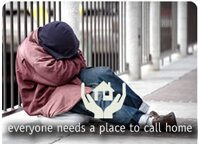How much new social housing is BC building?
KEY FINDINGS
THIS SHORT PAPER DRAWS ON DATA in the BC government’s own service plans to put together a picture of where we have seen concrete action on the housing front and where action has been in short supply.
Most of the increased government support in recent years has been focused in three areas: rental assistance supplements, new emergency shelter beds, and the purchase of existing SRO (single room occupancy) hotels. While these initiatives are helpful and laudable, they do not create actual new low-income housing units.
Overall, the number of households assisted by provincial housing programs increased by approximately 11,530 over the last five years. However: Of this increase, 63 per cent (7,270 households) can be attributed to rental assistance to families through the Rental Assistance Program, while another 1,010 are individuals assisted through the Homeless Rent Supplement; Another 1,420 of the total increase are new emergency shelter beds (not housing units); and 1,550 of the “new” supportive housing units for homeless people with mental health and addiction problems are in the purchased SRO hotels (rather than actual new low-income housing supply).
There has been genuine growth of supply in some areas, such as about 1,500 units of new supportive housing for the homeless, and housing for frail seniors. But against these increases, the province has seen a loss of 2,820 independent social housing units. Taken together, the government’s own data indicate an overall net increase of only 280
actual social housing units over the past five years, a sobering and concerning finding. In contrast, between the mid-1970s and early 1990s, with the help of the federal government, BC created between 1,000 and 1,500 new units of social housing per year.



